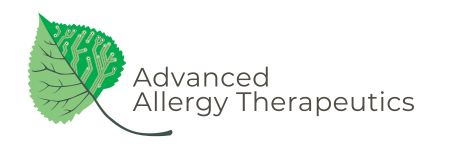Food Sensitivities

Finally…Experience Relief from Your Miserable Food Sensitivities
Food sensitivities affect millions of people every day. It is highly probable that you will encounter patients in your practice who experience the distressing effects of this condition. It is no fun when they can’t eat their favorite foods or enjoy a nice meal with friends and family or suffer with unwanted symptoms after they eat.
The number of people with food allergies and sensitivities in America has doubled in each of the last several decades.
Unfortunately, food sensitivities are an increasingly common issue for many people. These sensitivities can cause a wide range of symptoms, from mild discomfort to multiple health issues that impact daily life. Understanding food sensitivities is crucial for anyone treating people with digestive, respiratory or skin symptoms, as undiagnosed food sensitivities may be to blame.
Some common food sensitivity symptoms:
Bloating
Gas
Diarrhea
Reflux
Hives
Eczema
Asthma
Headaches
Behavioral Issues
Some common foods contributing to food sensitivities:
Dairy
Sugar
Wheat
Soy
Corn
Nuts
Yeast
Food Components
For a list of the top food allergens in the U.S., CLICK HERE.
Food sensitivities can include reactions to a specific food, which can literally be any food – meats, vegetables, fruits, nuts, seed, grains, etc. People can react to a single food or to multiple foods.
People can also develop sensitivities to food additives, such as sulfites, which are commonly found in dried fruits, wine, or frozen seafood. These reactions can cause symptoms such as headaches, hives, and asthma. Another example would be a sensitivity to food coloring, which has been shown to contribute to behavioral symptoms in kids and can be found in most processed foods. We are certain you will see this in your practice, as it is very common.
Some people have a sensitivity to components that are within the food such as a salicylate, amine, latex, oxalate, or glutamate. These components are found in healthy foods like fruits, vegetables or nuts and can be very tricky to identify, even with typical allergy avoidance diets. But if someone is reactive to a component, they will be reactive to the many foods that contain that specific component. For instance, if someone has a sensitivity to salicylates, they will notice symptoms when they eat things like tomato, coconut, citrus, berries, wine, nuts, seeds, herbs, or use products like toothpaste, soap, or aspirin, since they all contain salicylates. The culprit isn’t all the individual items listed, but a single component within the items. Sensitivities to a component can quickly cause multiple foods to become sensitive and cause symptoms. Some common symptoms to components range from digestive symptoms, to asthma, to headaches, to skin conditions. If your patients encounter difficulties consuming a wide range of foods, it is highly probable that food components play a significant role in their condition.
APPROXIMATELY 32 million people in the US have at least one food allergy.
Since there are very few options for the treatment of food sensitivities, other than avoidance, many people start removing foods from their diets in order to avoid suffering with the associated symptoms. This can quickly lead to a very restricted diet for many people, which is not healthy. Food sensitivities and a restricted diet can significantly impact your patient’s daily life and overall health.
Identifying food sensitivities can be challenging, as symptoms may or may not appear immediately after eating. Some people don’t experience symptoms for 12 to 36 hours. The best way to determine if someone has a food sensitivity is for them to keep a food diary so they can track their symptoms and identify their reactions. However, the sole recourse in this approach is avoidance, which may not be optimal, particularly when individuals react to multiple foods or foods they enjoy. Moreover, continuously restricting foods for general health reasons is not a viable or advisable option.There is another way.
By becoming an AAT practitioner, you will gain access to new tools and protocols that will allow you to greatly expand your practice to include treating the many symptoms associated with food sensitivities. With the AAT Expert System, you will be able to quickly and easily identify substances that may be triggering unwanted symptoms in your patients and confidently offer them an alternative to avoidance. The AAT Expert System will enable you to help your patients get back to eating the things they love instead of avoiding them. Your patients will love the results and will be happy to tell their friend and family members about you and your practice.
People with Food Sensitivities in the US:
10.8% of Adults
7.6% of Kids
Food sensitivities are a common issue that can have a significant impact on quality of life. While there is no definitive test for food sensitivities, as an AAT healthcare professional, you can quickly and painlessly help your patients identify their sensitivities and reduce their symptoms to improve their overall health and well-being.
With the AAT Expert System, you can help your patients eat their favorite foods again, without the symptoms!
Food Sensitivities
Seasonal Allergies
Skin Conditions
Symptoms & Conditions
Items AAT Treats
Top Allergens in the U.S.
Allergies, Sensitivities & Intolerances
Find an AAT Practitioner
DID YOU KNOW?
Eight foods account for 90 percent of all allergic reactions worldwide: eggs, milk, wheat, soy, shellfish, fish, tree nuts and peanuts.
THE AAT EXPERT SYSTEM DOES NOT GUARANTEE ANY RESULTS.
While the AAT Expert System is highly effective in the relief of many symptoms associated with allergies or sensitivities, some cases do not respond.
The AAT Expert System does not treat cases of anaphylaxis or life threatening symptoms. Strict avoidance is always advised.
